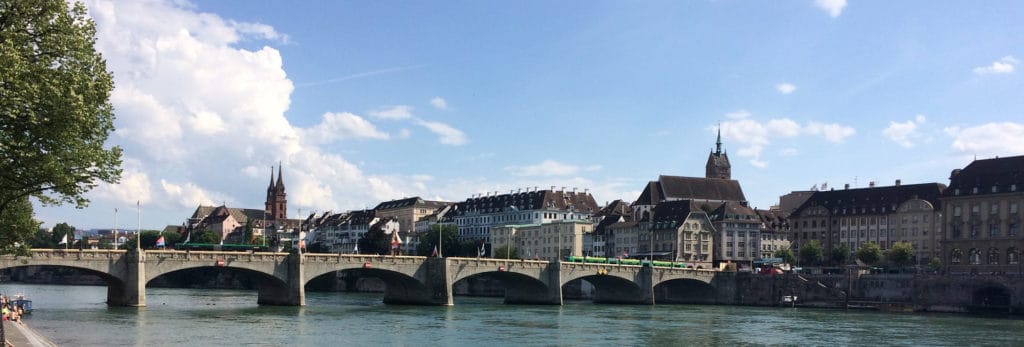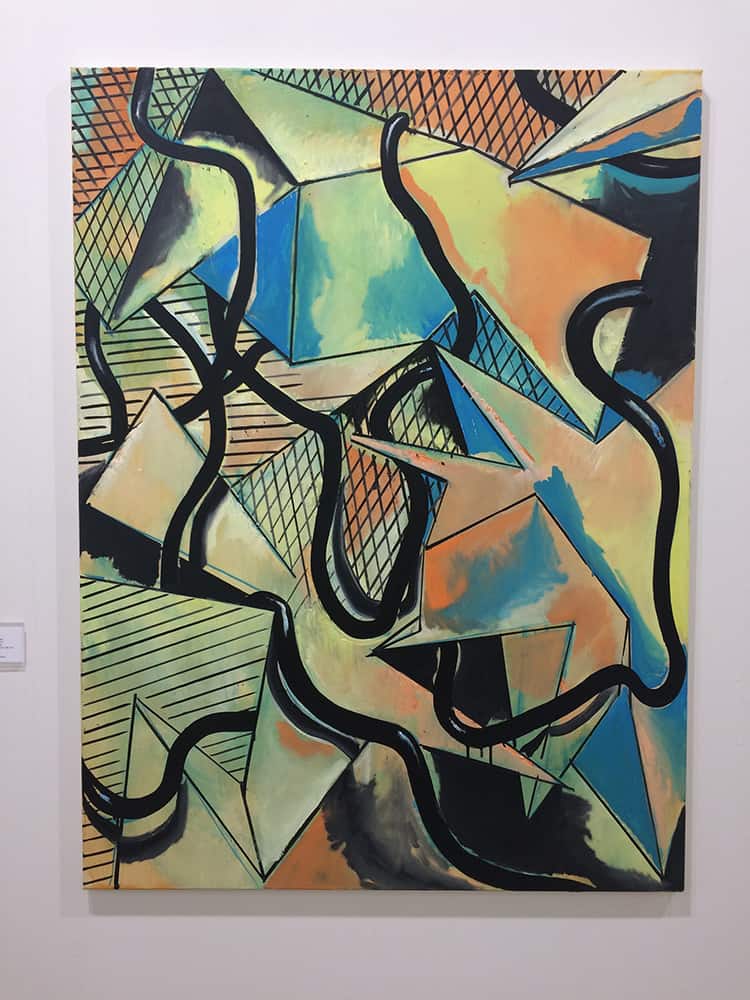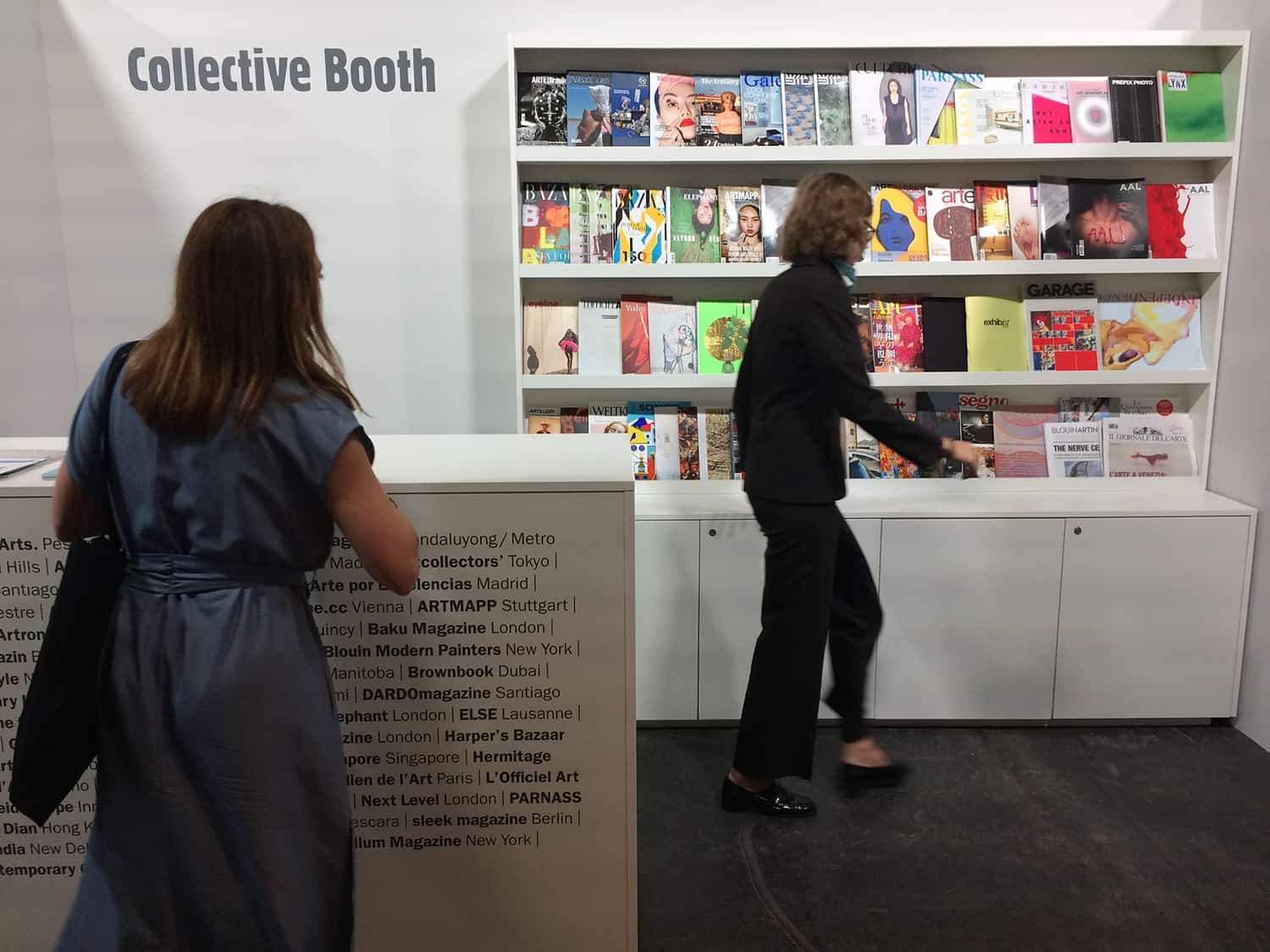Some of the greatest transactions and most lucrative deals in years were supposedly made during the latest edition of Art Basel, the networking event that provides its visitors with the opportunity to view extraordinary works of art of the highest order in close proximity. The accumulation of the greatest contemporary pieces right next to each other, displayed within the gallery stands’ limited spaces inspires you and captivates your imagination. If the shows were staged in a museum or private gallery, one would rightly expect a more conventional and minimalistic approach to the exhibition space that would showcase the wealth of artworks in the spacious white cube. In case of art fairs, however, marketing usually supersedes aesthetics. Nevertheless, there are a few notable exceptions to the rule. Several galleries, especially those specialising in the art of the early 20th century, not only recreated their actual space and arranged their works as if they were organising another curated art show, but also strived to transport the viewer out of the enormous market into a private exclusive interior of a gallery based in Paris, London or Zurich. Their expositions were audacious, distinctive and defiant, flying in the face of the exhibition stand’s typical design. They conveyed the creative vision of curators or artists, who encouraged you to contemplate art, made you smile and marvel at their resolve while questioning the idea behind art fairs.
Piet Mondrian, Claude Monet, Mark Rothko – Beleyer Foundation

Beleyer Foundation, Photo Contemporary Lynx
‘Je poursuis un rêve. Je veux l’impossible.’
Claude Monet
The beautiful minimalistic and bold juxtaposition of Monet’s the Rouen Cathedral, Rothko’s hypnotising navy blue abstraction and Mondrian’s painting displayed at the Beleyer Foundation’s stand represent the history of one of the most prominent art collections in Switzerland. The design emanates a sense of serenity and reflection. The Holy Trinity of contemplation, sensibility and living in the moment resides in the art sanctuary of sorts that reflects the history and the structure of the museum’s glazed building, which overlooks surrounding fields and a pond. A separate room boasts a painting from the Water Lilies’ series by Monet, one of the most valuable pieces in the collection, which, alongside the Rouen Cathedral, has been elevated to the status of a classic. As a result, Art Basel managed to bring together tradition and avant-garde, art history and collection, as well as dreams and reality in an exceptionally subtle manner.
‘Every true artist has been inspired more by the beauty of lines and color and the relationships between them than by the concrete subject of the picture.’
Piet Mondrian
‘The picture must be […] a revelation, an unexpected and unprecedented resolution of an eternally familiar need.’
Mark Rothko
João Maria Gusmão + Pedro Paiva – Sies + Höke
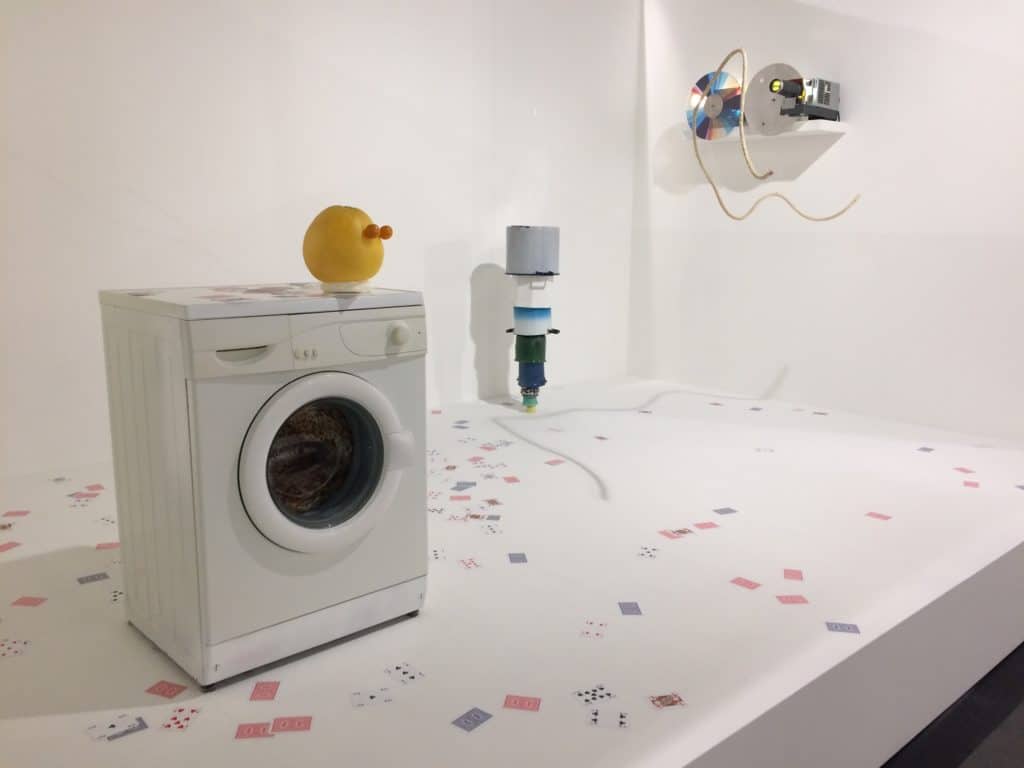
João Maria Gusmão + Pedro Paiva – Sies + Höke, Photo Contemporary Lynx
The Düsseldorf-based art gallery divided its stand into two separate worlds, one of which, designed by the Gusmão + Paiva duo, seems particularly worth mentioning. Everyday objects, such as a washing machine, a ball, a deck of cards, pots, a rope and a projector, stand or hang on the white platform. Surprisingly enough, these objects weren’t altered or repainted. Instead, they were allowed to retain their basic function. A washing machine washes clothes, a rope spins, one card keeps falling on the ground…obviously. The viewer is thus taken aback and becomes wary of the imminent change in the state of things. It can’t be this simple, can it? While watching the leopard print clothes inside the washing drum, you can’t help it but wonder how ludicrous it seems. You came to the art fair! The ubiquity of pieces by Rothko, Monet, Warhol, Basquiat, Kapoor, Calder and Picasso astounds you. Yet, here you are, observing the rope swirl, a washing machine work, and cards falling. The absurdity and tension triggered by incredulity are both under- and overwhelming. However, the art practice of the two artists rests upon an abstract quality to the mundane acquired by means of isolating certain activities from the chain of everyday events they are usually a part of. What is more, the artists’ short and restrained videos feature a blind person’s grimace while eating a papaya, a baker making croissants and a man riding a donkey at a street market in Kenya. According to Adrian Searle of the Guardian, “they can make drama out of nothing, and art out of anything.” The Gusmão + Paiva’s art show, which revolves around insignificant objects and actions, redefines arte povera; provides a refreshing and grotesque commentary on the condition of the art world and commercial art fairs, which have essentially become the platform for galleries to lure and amaze potential buyers by displaying some of their most renown and valuable works of art exhibited at the stands in accordance with an aforethought marketing strategy.
Cécile B. Evans – Emanuel Layr Gallery
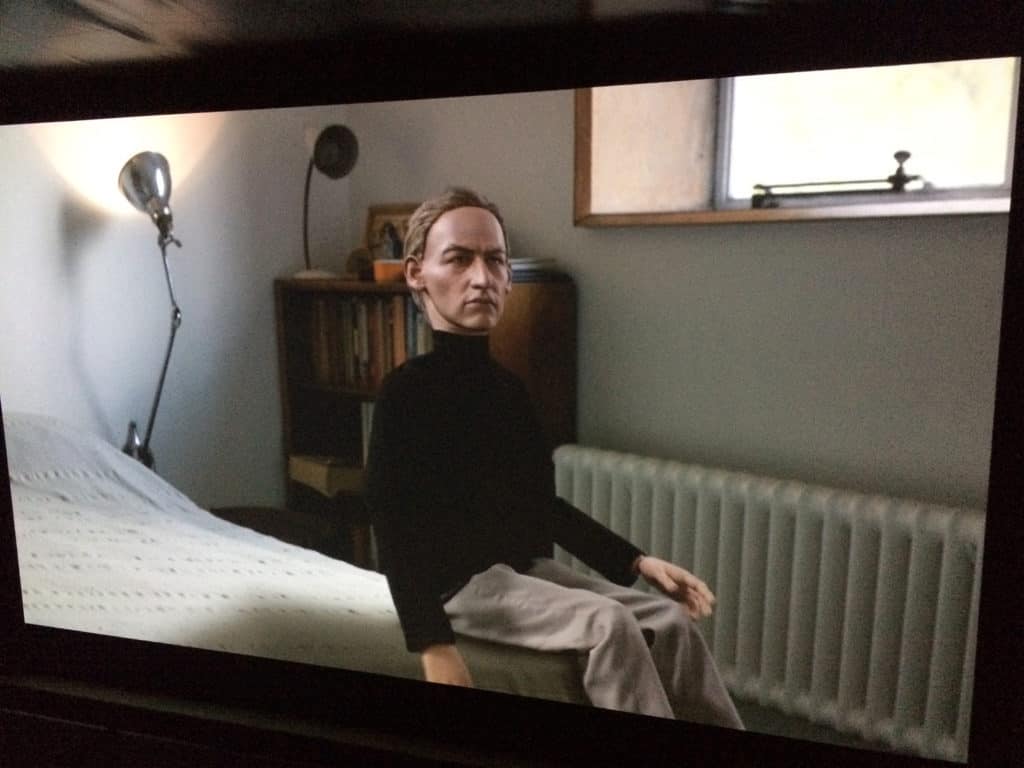
Emanuel Layr Gallery, Photo Contemporary Lynx
At first glance, you encounter a bunker at the commercial stand. It is separated from the rest of the world to create its very own self-sufficient internal microcosm. Behind the “concrete façade” of the art installation hide “apartments” and their inhabitants’ stories, which seem reminiscent of the utopian vision of Le Corbusier and housing units imagined by J.G. Ballard in his novel “High-Rise”. Evans’ art project entitled “Amos’ World” is an architectural video installation, conceived as a television show set in a socially progressive housing estate. The show, divided into episodes, follows an architect called Amos – a cross between Saint-Exupéry’s “Little Prince” and a famously brutal architect – and the inhabitants of the housing estate. Episode One introduces viewers to Amos and some of the tenants, individuals interwoven into the larger infrastructure of Amos’ building. His comfortable perch takes a turn when his perfect individual-communal fantasy for the Capitalist age begins to crumble as the tenants fail to conform to the behaviours he had envisaged. Fissures in this carefully constructed network reveal a breakdown of person-to-person and person-to-infrastructure power dynamics as the audience themselves look on from units nested within an architectural construction built to echo that on screen. Seemingly free from the pressures of an outside environment but with a visibly constricted view – how has the networked age impacted the irreconcilable gap between individual rights and the controlling nature of the systems that create them?
Joanna Piotrowska – Dawid Radziszewski Gallery
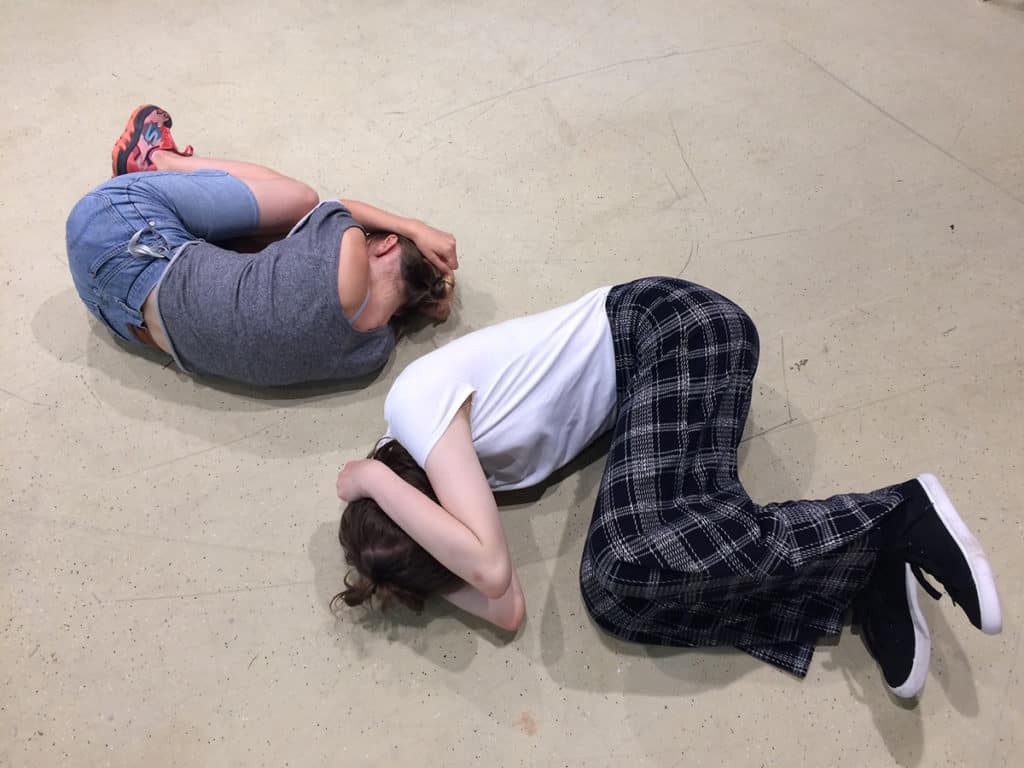
Joanna Piotrowska, Dawid Radziszewski Gallery, Photo Contemporary Lynx
Joanna Piotrowska had been doing her performance at the Warsaw-based gallery’s stand for the entire duration of the art fair. Inspired by the gestures and movements featured in a self-defense manual, the artist choreographed a four-hour looped piece that focused on the techniques for striking pressure points. The divergence from the moves’ chief aim gave rise to a modern dance performance. If you took your time to carefully observe the artist’s movement, you could discern the gestures of intimidation, dodge, defense, and crossing arms for safety. The performance clearly draws on the series of photographs by Piotrowska although it was created for this occasion only. The well-known “Frantic” series captures children’s play that involves building forts and shelter out of household objects and furniture, such as tables, chairs, blankets, pillows, to protect themselves and their loved ones from an evil wolf, witch and ghost. Her photographs show the DIY shelters inhabited by adults who, despite being all grown-up and mature, still seek a place in which they could hide from an overbearing world. An adult, much more than a child, is actually in dire need of a hideout, a metaphorical lair where no one would ever find them.


